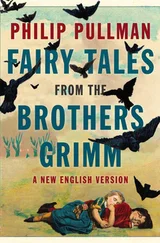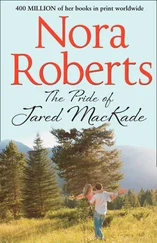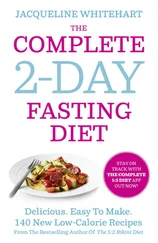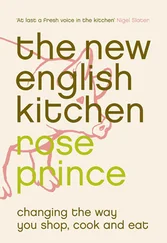It is impossible to choose good beef by inspection alone, but joints of native beef tend to be small and the grain finer. The colour of beef flesh varies and does not always relate to a long period hanging on the bone. This is why it is better to buy beef and other meat from a place where you can ask questions about feed, breed and welfare. Ideally, you want to hear that the animal, a native breed, was slowly reared on grass or forage, at a local farm.
Buying beef from local farms reduces carbon emissions, shortens journeys, reducing stress to the animals, and supports the local economy. To find locally reared beef, speak first to your nearest high-street butcher or visit a local farmers’ market. If no joy, look at www.bigbarn.co.uk, put in your postcode and check their area maps, which highlight local producers – but ask specific questions about feed and breed before buying from any of their suppliers.
In London I buy beef from the butcher Jack O’Shea, at 11 Montpelier Street, London SW7 1EX ( www.jackoshea.com; tel: 020 7581 7771). He hangs it for weeks and knows everything about cutting in both the Continental and the British way. He is an expert on cheap cuts that can be put on the grill, worth a visit for this alone (see recipes below).
Buying beef via home delivery is another option. Below are producers that I have used regularly:
 Pipers Farm in the West Country rears handsome Devon Ruby cattle, then hangs and butchers them expertly: www.pipersfarm.co.uk; tel: 01392 881380.
Pipers Farm in the West Country rears handsome Devon Ruby cattle, then hangs and butchers them expertly: www.pipersfarm.co.uk; tel: 01392 881380.
Donald Russell is another great butcher whose beef is carefully matured and cut: www.donaldrussell.com; tel: 01467 629666.
 Blackface.co.ukin Dumfries and Galloway rears Galloway beef on the hill for up to four years, well beyond the OTM limit: www.blackface.co.uk; tel: 01387 730326.
Blackface.co.ukin Dumfries and Galloway rears Galloway beef on the hill for up to four years, well beyond the OTM limit: www.blackface.co.uk; tel: 01387 730326.
 Edwards of Conwy sells Welsh beef, including cuts from native Welsh Black cattle: www.edwardsofconwy.co.uk; tel: 01492 592443.
Edwards of Conwy sells Welsh beef, including cuts from native Welsh Black cattle: www.edwardsofconwy.co.uk; tel: 01492 592443.
Andrew and Sybille Wilkinson at Gilchester Organics rear cattle on their organic pasture in Northumberland: www.gilchesters.com; tel: 01661 886119.
Beef – the cheap cuts
With beef I need to solve a problem. It is not a meat I eat often because, much as I love it braised for hours until tender, the truth is that I cannot always plan ahead. The kind of beef that it is best to buy, the slow-reared native breeds fed on grass, is pricy stuff. The sirloin, forerib, rib eyes and rump steaks are the easiest meals to make but come at an extraordinary cost. So, to find pieces of the best beef that are affordable for routine meals yet quick to cook, what is needed is an exceptional butcher. Most butchers insist that all cheap cuts must be minced or cut into cubes and slow cooked, but butchers who understand Continental cutting know differently. If the side of beef has been well hung – and this is almost the single most important element in successful beef cookery – it is quite easy to fast cook some of the more extreme cuts.
Cheap cuts on the grill
The following is a new series of recipes, the basic ideas borrowed from European butchery and cooking but adapted to British ingredients. They rely on your willingness to eat the meat medium rare or rare. All are cooked as whole pieces of meat and then sliced. If they are brown all the way through – ‘well done’, as the oxymoron goes in this context – the effect is ruined.
Grilled Goose Skirt with Salad Leaves and Berkswell Cheese
Goose skirt is a dark meat with a wide grain (it is a different cut from the plain flank or skirt in the recipe on here). It is essential that the beef has been well hung. If seared quickly, it will be very tender. Serving it with leaves and a hard, mature ewe’s milk cheese is a good antidote to the richness of gravies and butter sauces. You could substitute Lord of the Hundreds, Somerset Rambler or Italian pecorino for the Berkswell.
Serves 4
750g/1lb 10oz goose skirt steak, left in whole pieces
4 large handfuls of young salad leaves
4 tablespoons extra virgin olive oil
115g/4oz mature Berkswell cheese. pared into thin slices
sea salt and freshly ground black pepper
Have ready 4 warm (but not hot) plates. Season the beef with salt and pepper. Heat a ridged grill pan until smoking, then sear the beef for about 2 minutes per side. Ideally, it should be eaten very rare in this dish. Transfer to a wooden board, leave to rest for a minute and then slice thinly. Lay the slices on the warm plates, scatter the leaves on top and shake over the olive oil. Put the pared cheese over the top and eat immediately.
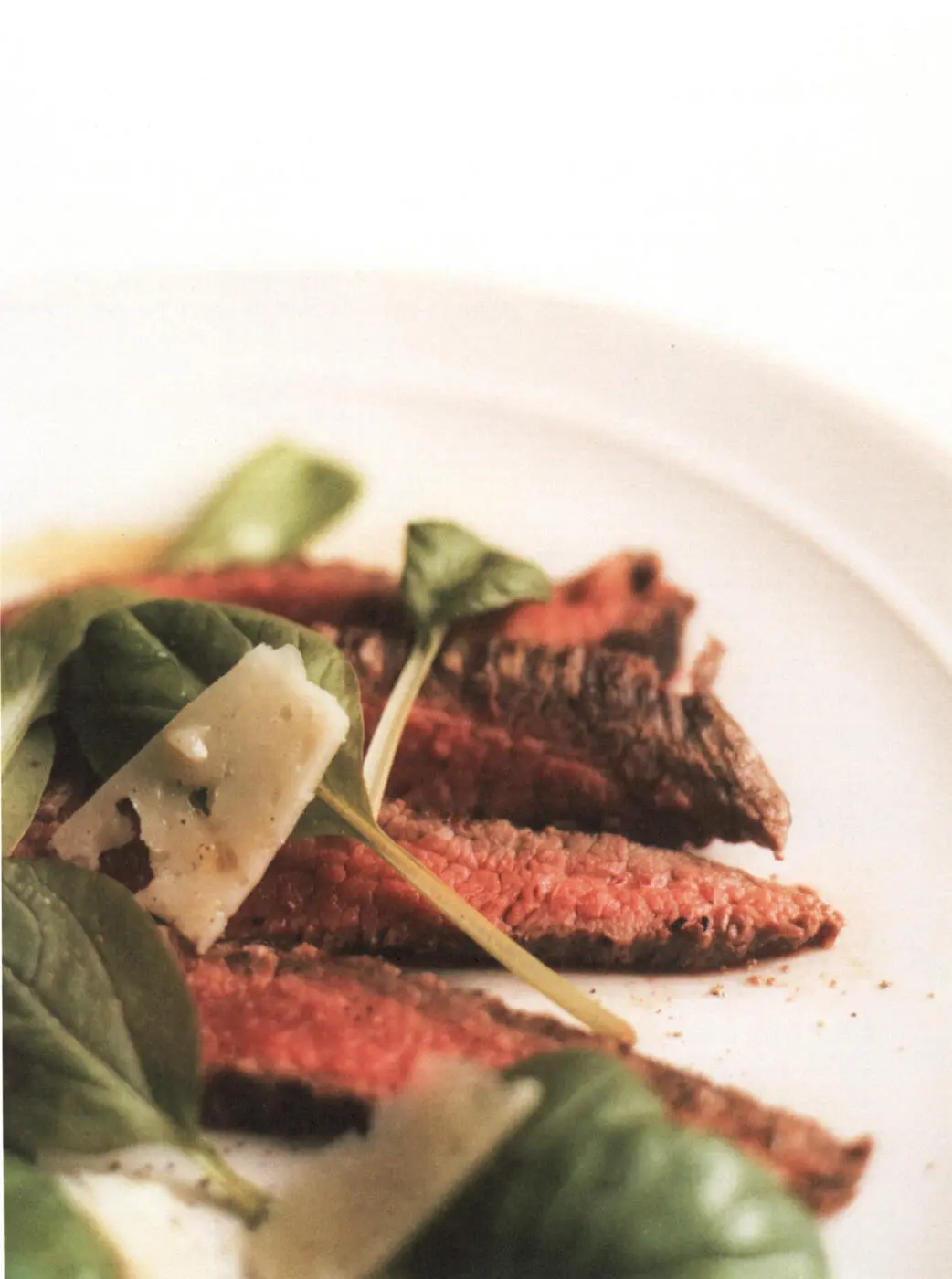
Top of the Rump with Lemon and Parsley Butter
This is a tender muscle, taken from the cheaper end of the rump, with a strip of fat attached. In Portugal and Brazil it is known as the picanha , and thought far superior to a rib-eye or fillet steak. Unlike the skirt and flank in the previous and following recipes, it is grilled in individual helpings. If you like a peppery taste, add a tablespoon of crushed pink or green peppercorns to the butter.
Serves 4
4 top rump steaks
For the lemon and parsley butter:
140g/5oz unsalted butter, softened
juice and grated zest of ½ lemon
a large handful of very finely chopped parsley
freshly ground black pepper
First prepare the butter, putting all the ingredients in a bowl and stirring carefully until well mixed. Place the mixture between 2 sheets of greaseproof paper (or 2 butter papers). Roll it to about 1cm/½ inch thick and put it in the fridge to harden. When hard, remove from the fridge and use a small, round biscuit cutter to cut out discs (or other shapes). Leave the discs in the fridge.
Grill or fry the steaks, seasoning them with a little black pepper first. Ideally they should be served rare (see guide on here). Leave to rest in a warm place for about 10–15 minutes. Warm 4 plates. Serve the steaks with a disc of the lemon and parsley butter melted on top. Have some English and Dijon mustard ready on the table.
Flank with Tarragon Butter Sauce
Sometimes called skirt or bavette , flank is a cut taken from the diaphragm muscle of the beef animal. Here it is grilled whole, then sliced and served with a buttery sauce sharpened with shallots and vinegar. It must be cooked so it is rare in the centre or it will be dry. If you like steaks well done, I am afraid you will have to use conventional rump or sirloin.
Making the sauce requires a certain amount of patience, and a small, heavy-bottomed pan to prevent overcooking. It can be made in a food processor, however, if the butter is melted first and trickled in warm. Serve with green vegetables – the courgette saladis good, fried potatoes even nicer …
Serves 4–6
2 whole pieces of flank
a little olive oil
freshly ground black pepper
For the tarragon butter sauce:
4 tablespoons tarragon vinegar
4 tablespoons dry white wine
2 shallots, finely chopped
3 egg yolks
175g/6oz unsalted butter, at room temperature
a small handful of French tarragon leaves, chopped
sea salt and freshly ground black pepper
Season the beef with pepper, then rub it with a little olive oil. Set to one side (leaving it at room temperature).
Читать дальше

 Pipers Farm in the West Country rears handsome Devon Ruby cattle, then hangs and butchers them expertly: www.pipersfarm.co.uk; tel: 01392 881380.
Pipers Farm in the West Country rears handsome Devon Ruby cattle, then hangs and butchers them expertly: www.pipersfarm.co.uk; tel: 01392 881380.
